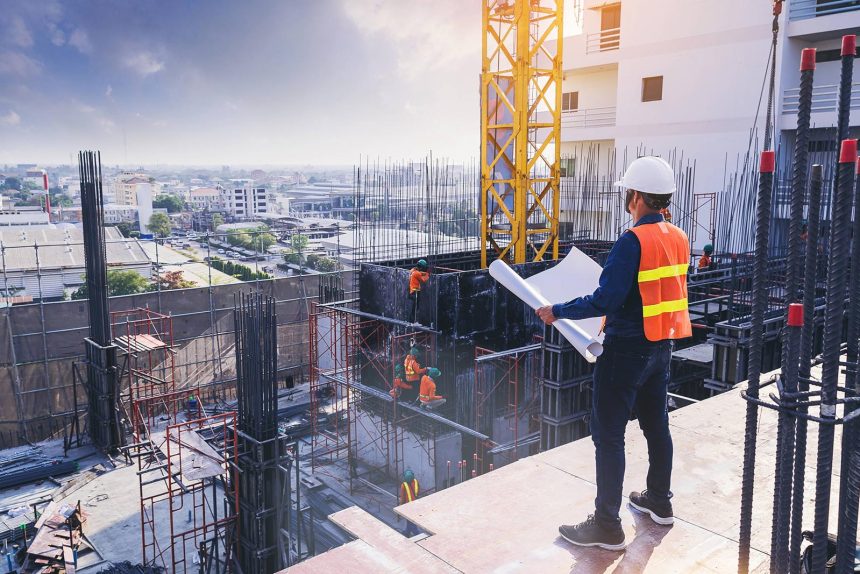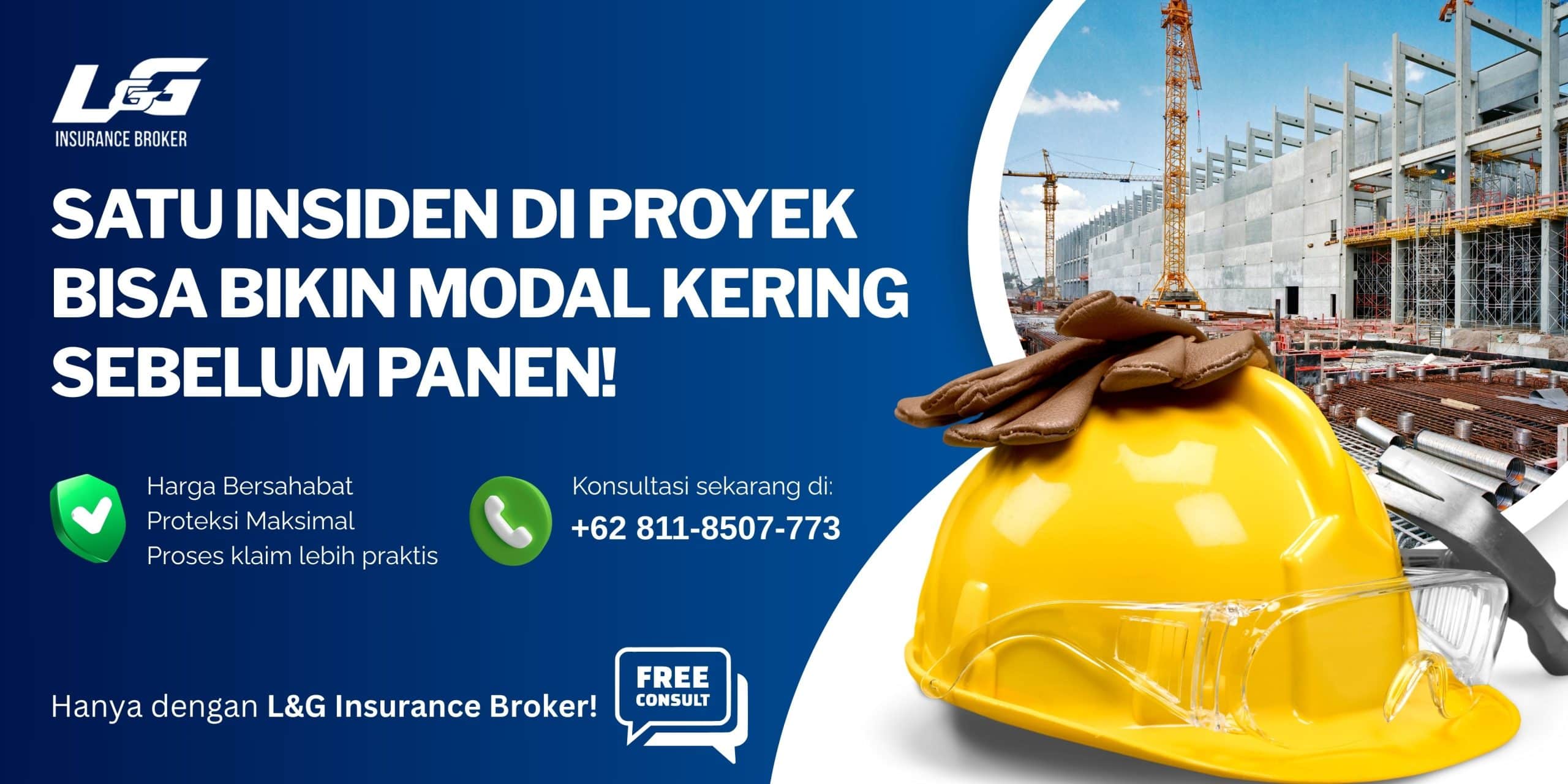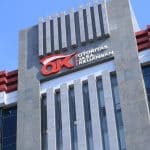Liga Asuransi – Owners, contractors and project consultants, how are you? May you, your family and your business always be in good condition. In this blog, we focus on discussing risk management and insurance. This time, we will examine premium costs project insurance efficient and effective, one of the crucial aspects in the construction industry.
Many industry players only focus on low premiums, but pay less attention to the breadth of insurance coverage. As a result, when an accident or loss occurs, the claim submitted does not meet expectations, and can even be rejected because the policy does not cover the risks faced. Choosing insurance is not just about looking for cheap prices, but ensuring that the protection provided truly protects the project from potential major risks.
Read the complete analysis in this article and ensure your project has optimal protection! If this article is useful, share it with your colleagues. Don’t forget, find hundreds of other interesting articles on this blog to deepen your understanding of insurance and risk management in construction. 🚀
In the construction industry, risk is something that cannot be avoided. Starting from natural disasters, work accidents, project delays, to lawsuits, all can cause large financial losses for contractors, project owners and investors. Therefore, having construction insurance is an important step to protect the project from potential risks that could interfere with its completion.
However, many parties still do not understand how insurance premium costs are determined. Understanding the factors that influence premiums, how to calculate them, and estimates for various types of projects can help contractors and project owners allocate budgets more appropriately and obtain optimal coverage.
This article will provide a complete guide to the factors that influence the cost of construction project insurance premiums, how to calculate them, as well as premium estimates for wet risk, civil work, EPC and infrastructure projects. With this information, you can choose a policy that suits your project needs and get maximum protection at a competitive cost. 🚀
Factors Affecting Construction Insurance Premium Costs
The cost of construction insurance premiums is not determined arbitrarily. Various factors are considered by insurance companies in setting premiums for a particular project. Contractors and project owners need to understand these factors in order to choose a policy that suits project needs while managing premium costs optimally. Here are some of the main factors that influence construction insurance premiums.
- Project Type and Scale
The type and scale of the project play a large role in determining the cost of the premium. Projects with higher risks usually have larger premiums.
Wet Risk Projects (Construction at Sea, Piers, Harbors, Offshore Rigs)
- The risk is higher because the project location is in a water area with the potential for high waves, corrosion and strong winds.
- Premiums are more expensive than land construction projects.
Civil Work (Housing, Office Buildings, Malls, Factories)
- Medium risk, depending on the complexity of the structure and height of the building.
- Premiums are relatively lower compared to large infrastructure projects.
EPC (Engineering, Procurement, and Construction) (Complex Projects such as Power Plants, Oil Refineries, Chemical Plants)
- Involves high technology and mechanical-electrical installations that require Erection All Risk (EAR) Insurance.
- High risk due to potential equipment failure and explosion.
Infrastructure (Toll Roads, Bridges, Dams, Airports)
- High risk due to impacts from the surrounding environment and potential natural disasters.
- The premium costs are quite large because it involves a lot of workers and heavy equipment.
- Scope of Insurance Coverage
The wider the policy coverage, the higher the premium. Some types of additional protection can increase premium costs, such as:
- Construction All Risk (CAR) vs. Erection All Risk (EAR)
CAR Insurance protects civil construction projects such as buildings and infrastructure.
EAR Insurance is designed for the installation of more complex mechanical and electrical equipment.
- Third-Party Liability Insurance
Protects against third party claims resulting from property damage or injury around the project.
Adds a cost premium but is important for projects in urban areas or near residential areas.
- Delay in Start-Up (DSU) Insurance
Provide compensation for project delays that impact operations and income.
Typically used in infrastructure and industrial projects with tight deadlines.
- Workmen’s Compensation Insurance
Covers compensation for workers who experience work accidents.
Mandatory in projects that employ a large number of workers.
- Project Duration and Policy Period
The longer the project duration, the greater the premium costs due to increased risk opportunities.
Short-term projects (less than 12 months) usually have lower premium rates than multi-year projects.
The policy must be adjusted to the project schedule to avoid coverage periods that are too short or too long.
- Environmental Conditions and Project Location
Projects in areas prone to natural disasters such as earthquakes, floods or tsunamis tend to have higher premiums.
Geographic and weather factors are also considered by insurance companies in determining the level of project risk.
For example, projects in coastal or mountainous areas may be riskier than projects in flat areas.
- Contractor Experience and Track Record
Insurance companies assess risks based on historical claims and the contractor’s work accident rate.
Contractors with a good track record and low accident rates will get more competitive premiums.
Contractors with a history of high insurance claims or projects with a high accident rate will be charged higher premiums.
Work safety standards and compliance with regulations are also important factors in determining premium rates.
- Total Project Value and Materials Used
The higher the project value, the greater the premium that must be paid.
Projects with special materials or advanced technology such as earthquake-resistant steel, large electrical equipment, or liquid fuels may increase risk, resulting in higher premiums.
If the project uses materials with a high fire rating or imported materials that are difficult to replace, the premium rate will be more expensive.
- Deductibles and Risk Retention
Deductible is the amount that must be covered by the policyholder before the claim is paid by insurance.
Choosing a higher deductible can lower premium costs because the insurance company covers less risk.
However, if the deductible is too high, the contractor must be prepared to cover large amounts of out-of-pocket costs in the event of a claim.
Optimal strategy: Determine balanced deductibles and risk retention so that premium costs remain competitive without burdening project finances.
Understanding the factors that influence the cost of construction insurance premiums is critical for contractors and project owners to obtain optimal protection without paying more than they need to. The type of project, insurance coverage, project location, policy duration, contractor track record, project value, and deductible strategy all play a role in determining premium costs.
Working with a professional insurance broker like L&G Insurance Brokers can help contractors and project owners get the best policies with appropriate coverage and competitive premiums.
Don’t take risks in your projects! Contact L&G Insurance Brokers now for a free consultation and the best insurance solutions for your construction project! 🚀
How to Calculate Construction Insurance Premiums
Calculating construction insurance premiums is an important step for project owners and contractors so they can plan their budget appropriately and get optimal protection. Insurance premiums are calculated based on several main factors, such as project value, type of construction, policy coverage, and project risk level.
- General Formula for Calculating Construction Insurance Premiums
Construction insurance premiums are generally calculated by multiplying the project value by the premium rate percentage determined by the insurance company.
For example, if a project has an insured value of 50 million US dollars and the applicable premium rate is between 0.25% to 0.5%, then the estimated premium cost can be calculated by multiplying the project value by that percentage.
Apart from the main factors above, several additional elements also influence the amount of the premium, including:
- Additional coverage such as Third-Party Liability Insurance, Workmen’s Compensation Insurance, or Delay in Start-Up (DSU) Insurance, which can increase premium costs.
- Selected deductible (claim franchise), where the higher the agreed deductible, the lower the premium costs that must be paid.
- Project conditions, including project location, level of environmental risk, and work safety track record.
- Examples of Premium Calculation Simulations for Various Types of Projects
The following are premium estimates for several types of projects based on project value and premium rates commonly used in the construction insurance industry.
- Wet Risk Project (Construction in Water – Bridges, Harbors, Offshore)
If the project value reaches 50 million US dollars with a premium rate ranging from 0.25% to 0.5%, then the estimated premium is in the range of 125 thousand to 250 thousand US dollars.
- Civil Work (Office Buildings, Apartments, Factories)
For a building or commercial facility construction project with a value of 30 million US dollars, and the premium rate is between 0.1% to 0.3%, the estimated premium ranges from 30 thousand to 90 thousand US dollars.
- EPC Project (Engineering, Procurement, and Construction – Complex Projects such as Power Plants, Oil Refineries, Chemical Plants)
If the EPC project has a value of 100 million US dollars with a premium rate ranging from 0.2% to 0.4%, then the estimated premium that must be paid is between 200 thousand to 400 thousand US dollars.
- Infrastructure (Toll Roads, Dams, Airports)
For infrastructure projects with a value of 200 million US dollars and the applicable premium rates ranging from 0.15% to 0.35%, the estimated premium is between 300 thousand to 700 thousand US dollars.
Each project has different characteristics and levels of risk, so working with an insurance broker can help project owners determine the premium calculation that best suits their needs.
- The Role of Insurance Brokers in Getting the Best Premiums
Determining the optimal project insurance premium is not just a matter of understanding how to calculate it, but also requires negotiation strategies and coverage adjustments. In this case, insurance brokers play an important role to ensure that contractors and project owners get maximum protection at competitive premium costs.
Why Use an Insurance Broker?
Some of the main benefits of using insurance broker services to obtain a construction policy are:
- Brokers have access to multiple insurance companies and can compare premiums and the best coverage for a project.
- Brokers can customize insurance coverage to suit project needs, eliminating unnecessary coverage and adding essential coverage.
- With experience and good relationships with insurance providers, brokers can negotiate lower premium rates.
- Brokers also assist in the claims process if an incident occurs, ensuring that claims are processed quickly and in accordance with policy provisions.
How Do Brokers Determine the Right Premium for a Project?
Insurance brokers perform risk analysis before recommending an appropriate policy to a project owner or contractor. The steps taken by the broker include:
Evaluate project risks based on location, type of work, and possible external interference.
Adjust insurance coverage to project needs, such as adding Third-Party Liability Insurance or Workmen’s Compensation Insurance if necessary.
Determining the optimal deductible strategy to balance the premium costs and the protection benefits provided.
Seek cost-effective solutions by ensuring that clients are not paying excessive premiums for unnecessary coverage.
Case Study: How Do Brokers Help Projects Save Premium Costs?
A contractor company handling an infrastructure project worth 150 million US dollars initially received a premium offer of 0.35% of the project value, which was around 525 thousand US dollars. After working with an insurance broker, the following adjustments were made:
- Reduced Third-Party Liability Insurance coverage from 10 million US dollars to 5 million US dollars.
- Increase the deductible from 50 thousand US dollars per claim to 100 thousand US dollars per claim, so that premiums are lower.
- Eliminates additional coverage that is not relevant to the type of project.
After renegotiation, the premium was finally agreed to be 0.25% of the project value, or approximately 375 thousand US dollars, resulting in savings of 150 thousand US dollars without sacrificing the project’s primary protection.
Calculating and optimizing construction insurance premiums is essential to ensure adequate protection in a cost-efficient manner. By understanding the factors that influence premiums and working with an insurance broker, project owners and contractors can obtain the best coverage at more competitive prices.
Working with L&G Insurance Brokers will ensure that your project gets the right insurance, optimal premiums, and full support in claims management.
Don’t let your project go without protection! Contact L&G Insurance Brokers now for a free consultation and the best construction insurance solutions! 🚀
Conclusions and Recommendations
Construction insurance premiums are an important factor that must be taken into account by contractors and project owners to ensure optimal protection against various risks such as physical damage, project delays, work accidents, and lawsuits from third parties. Understanding the factors that influence premiums, such as project type, insurance coverage, location, duration, and deductible strategies, can help in managing premium costs more effectively.
Each project has different characteristics and risks, so choosing the right policy must be tailored to the specific needs of the project. For example, wet risk projects such as port construction or water bridges have a higher premium compared to civil work projects such as the construction of office buildings. Likewise with EPC and infrastructure projects, which require a wider scope due to the complexity and scale of the work.
In order to get competitive premiums with optimal coverage, it is highly recommended to work with a professional insurance broker such as L&G Insurance Broker. With extensive experience in the construction industry, brokers can assist in negotiating the best rates, adjusting policy coverage, and managing claims efficiently.
Don’t let your project go forward without proper insurance coverage! Contact L&G Insurance Brokers now for a free consultation and find the best solution for your project construction insurance. 🚀
Looking for insurance products? Don’t waste your time and contact us now
HOTLINE L&G 24 JAM: 0811-8507-773 (CALL – WHATSAPP – SMS)
Website: lngrisk.co.id
Email: oktoyar.meli@lngrisk.co.id
—







![[RECAP WEBINAR: Memahami Asuransi Construction/Erection All Risk - Third Party Liability]
Terima kasih atas antusiasme luar biasa dari seluruh peserta webinar kami! 🙌
Sesi ini membuka banyak wawasan baru terkait perlindungan menyeluruh proyek konstruksi, khususnya terkait risiko Construction/Erection All Risk (CAR/EAR) dan Third Party Liability (TPL) yang sering kali menjadi titik kritis dalam setiap proyek.
Webinar ini menegaskan bahwa manajemen risiko proyek bukan hanya soal pembangunan fisik, tapi juga kepastian perlindungan hukum dan finansial bagi semua pihak yang terlibat.
📣 Jangan lewatkan webinar kami berikutnya dengan topik yang lebih menarik dan penuh insight praktis!
Follow akun kami dan aktifkan notifikasi agar selalu update.
#ConstructionAllRisk #ErectionAllRisk #ThirdPartyLiability #AsuransiKonstruksi #BrokerAsuransi #webinargratis #webinarasuransiproyek](https://scontent-yyz1-1.cdninstagram.com/v/t51.82787-15/539915133_18394591822184229_1103267787624717807_n.jpg?stp=dst-jpg_e35_tt6&_nc_cat=107&ccb=1-7&_nc_sid=18de74&_nc_ohc=67fq45py5B0Q7kNvwG7KFXp&_nc_oc=AdmyIL4uq-BOaESYzCCks8NPVuBGSivegYO8i4zexP-f8Z2URfd3IdRpYWf8vfDtQj5w3jIcLmFMg7NIQ4RmYu0S&_nc_zt=23&_nc_ht=scontent-yyz1-1.cdninstagram.com&edm=ANo9K5cEAAAA&_nc_gid=8wBSJQLn3o1F-22JU_2QDw&oh=00_AfZpPGCK8ADsHeCAX_OU-Mpvok1CMk9wFvKNJEBuKg8ALg&oe=68C7486E)










